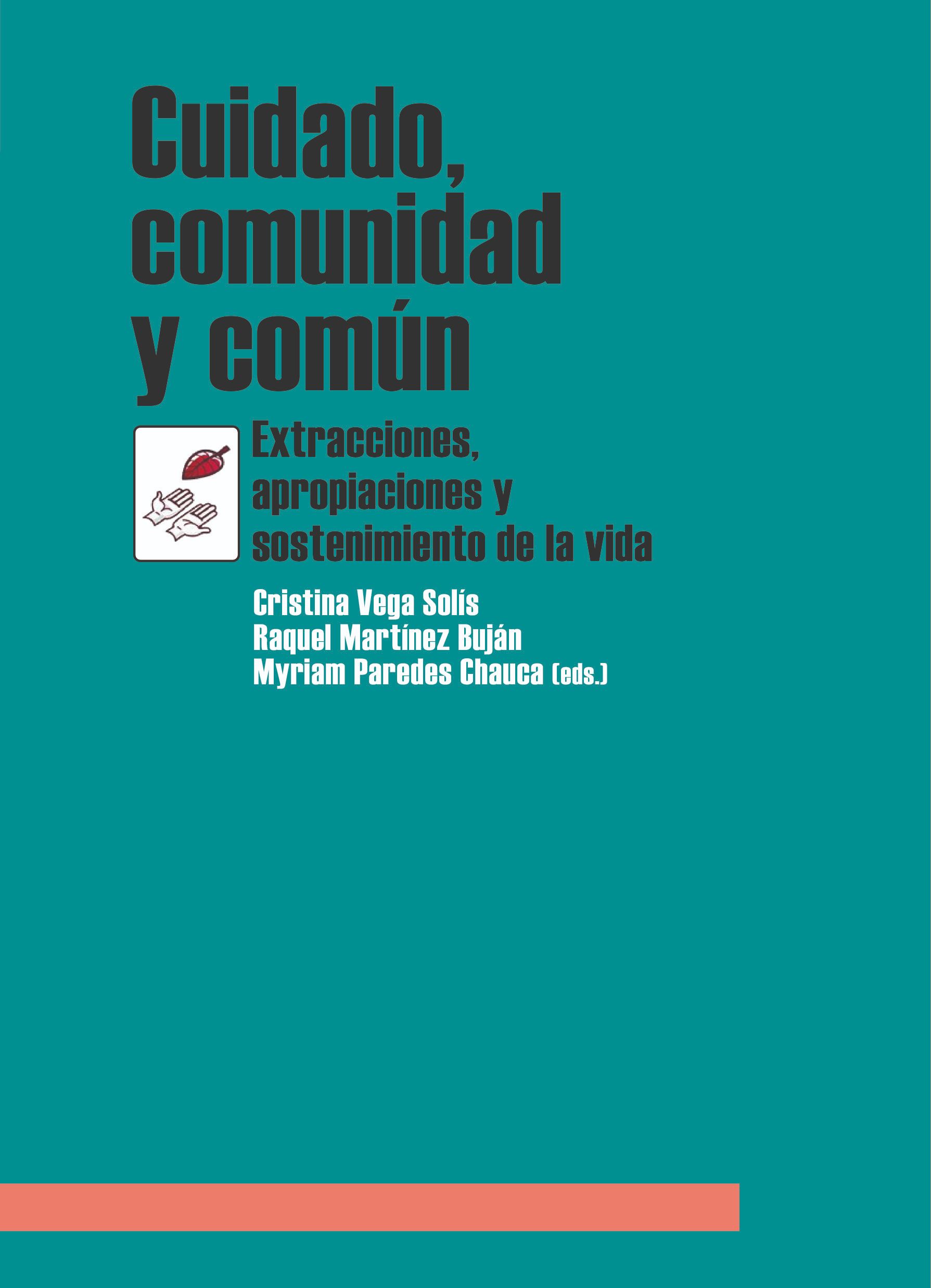Reproductive revolution and care crisis
- Dossier
- Mar 22
- 8 mins
The evolution of the population in the next 15 years is marked by what is called ageing of ageing, which predicts a significant increase in people aged over 100 and a gradual decrease in women of childbearing age. Although some call this a context of “demographic crisis”, more and more people see it as a “reproductive revolution”.
Three events have marked demographic development in recent decades: increased life expectancy, changes in reproductive patterns, and diversification of family models. In the first case, increased longevity allows us to share, for the first time in history, moments of various generations of our ancestors. We must not forget that life expectancy was just 34 years in Spain in the early 20th century. Today this figure is 82.3 years, making Spain one of the leading countries in the world in this area. These data are an accurate reflection of progress in healthcare, social and economic conditions, and in improved lifestyles. However, these also bring new social challenges as they represent a relevant change in the population pyramid, where older ages have increasingly more weight, with prospects of increasing in the 2030s.
According to the National Institute for Statistics, in 2020 Spain’s population aged over 65 represented 19.6% of the total, and will reach 26.5% in just 15 years’ time. The dependency ratio (percentage quotient of the sum of the population under 16 and over 64, divided by the population aged 16 to 64) will rise from 53.4% today, to 62.9% in 2035. This process leads to two trends. First, so-called ageing of ageing, which predicts a notable increase in people aged over 100 (18,217 in 2020), who are expected to reach 49,730 in just 15 years. Then the gradual drop in women of childbearing age since, if current demographic trends continue, population loss in the next decade will be concentrated in the 30-49 age groups, falling by 2.8 million. Add to this the sustained trend in reduced birth rate observed since the 1990s. The average number of children per women (called the synthetic fertility rate) is around 1.31, far from the 2.1 conventionally indicated to ensure generational change. Population will therefore rise in the top half of the population pyramid, and all age groups over 50 will increase in number while the baby boom generation (born in the 1960-70s) will start to reach retirement age around 2024.
The “reproductive revolution”
The combination of both trends (low birth rate with high survival) determines population ageing. Some contributions rate this context as a “demographic crisis” or “demographic winter” (Macarrón, 2010), but more and more voices are seeing it as a “reproductive revolution” (MacInnes and Pérez-Díaz, 2009). In the latter case, ageing is interpreted as demographic “efficiency”, reducing female reproductive effort and reinforcing family ties with the rejuvenation of all members by prolonging their life stages. Demographic ageing can therefore be viewed as a positive process, adding value to societies and evoking the consequences of other social changes. For example, new cultural values have given rise to changes in family types and sexual practices, now unrelated to reproduction. We thus avoid falling into apocalyptic forecasts of demographic collapse or the end of the family, and we can interpret this transition in a way that allows us to design a political and economic organisation according to public expectations.
Lower expectations on number of children among women is related to economic aspects in 19.9% of cases, and with work and work-life balance in 25.9%.
Indeed, despite diversified cohabitation patterns, alterations in terms of family preferences have not caused the low birth rate. Some research studies present solid arguments the same fertility preferences have remained in place in Western countries for 30 years, with the “two-child” rule mostly prevailing (Sobotka and Beaujouan, 2014), and Spain in no different. According to the 2018 fertility survey, almost half of women aged 18-55 express a desire to have a total of two children, and the percentage of women who want to have three children is 26.5%. Adding up these groups, the result is that almost three in four women want to have at least two children; however, one in five have fewer children than they desire (i.e., 21.1% of women in that age bracket). Following the results of that survey, lower expectations on number of children among women is related to economic aspects in 19.9% of cases, and with work and work-life balance in 25.9%. Therefore, the final number of children will first be influenced by the limits and opportunities offered by work-life balance policies; and second by the risks involved for couples by having children while they are both working and maintain a double breadwinner family model. This is why, in countries such as ours, in which citizen services are greatly limited, men and women (and especially the latter) use the “double breadwinner/extended family” strategy (Moreno, Ortega and Gamero-Burón, 2017), according to which household organisation is maintained thanks to the family network collaborating in care tasks while both spouses work.
 Illustration. © Margarita Castaño
Illustration. © Margarita CastañoIf in the early 1990s around 15% of grandparents stated that they took part in caring for their grandchildren, in 2010 this percentage had risen to 35%.
No willingness, no availability
However, the effects of longevity combined with reproductive changes are modifying relationships between generations. The fall in family members means families are less willing and available to care, a situation that is at odds with greater needs for caring for older adults, adding insufficient and fragmented resources. Hence, the educational institutionalisation of children at increasingly younger ages and hiring domestic employees to care for the elderly have risen in recent decades (Martínez-Buján and Moré, 2021). According to a survey on living conditions in 2016, 43.7% of children under three go to nursery. If in the early 1990s around 15% of grandparents stated that they took part in caring for their grandchildren (Meil, 2011), in 2010 this percentage had risen to 35% (Imserso, 2010). Today, grandparents are responsible for approximately 90% of daily care when the mother or father are not available (Meil, Rogero-García, Romerso-Balsas, 2018). Meanwhile, hiring domestic employees has become the main channel for privatising care for the elderly, and their tasks are more and more specialised in caring for ageing. A survey by the Centre for Sociological Research in 2014 on caring for dependants indicates that 30.1% of households that hire domestic service do so for care tasks. The percentage of migrant women among these employees is already 62.3%, with a higher percentage in the case of live-in carers, a format that has also been revitalised to care for the most fragile (Díaz and Martínez-Buján, 2021).
La mercantilización del cuidado no es una solución, porque incrementa las desigualdades socioeconómicas y no modifica los patrones de género.
For some time now, there has been relevant scientific literature and a response from feminist social movements showing that this care model —based mostly on unpaid work at home for women, with little participation in social services and growing privatisation through domestic employment— is in crisis. A greater demand for employment leads to more precarious conditions, and less development of the public sector and its services leads to greater saturation of women and more difficulties in care. The term care crisis (Pérez-Orozco, 2014) refers precisely to this constant tension between capital, employment and human reproduction, and limits in political organisation. This care crisis expresses the collapse in women’s and families’ capacity for care, and how this impacts society. The response of middle- and high-class homes has been to outsource care work, a demand mostly covered by migrant women, but commercialising care is not a solution as it increases socio-economic inequalities and does not change gender patterns. The most vulnerable sectors accumulate more health problems and dependency with no economic capacity to resort to the market.
The COVID-19 pandemic has brought visibility to this stratification more than even, and has shown that neither private commercialisation of care within families nor public formulas followed to provide this care were working effectively. In summary, the basic factors that must be considered when reformulating this social organisation of care are: scarce visibility and social value afforded to care; precarious work conditions of employees in this sector; difficulty of incorporating men into these care tasks; fragility of the care home system, which has been unable to prevent contagion; the need to reinforce home care services to respond to ageing at home as an alternative to nursing homes; and the opportunities afforded by mutual support community initiatives.
Bibliography
Díaz, M., and Martínez-Buján, R., ‘La recurrente marginación del sector del empleo del hogar y los cuidados: una difícil consecución de derechos laborales y sociales’. Gaceta Sindical, 36: 239-254 (2021).
Imserso, Encuesta mayores 2010. Institute for the Elderly and Social Services, Madrid, 2010.
Macarrón, A., ‘Falta el invierno demográfico en el manifiesto’. Expansión.com (25 November 2010).
MacInnes, J., and Pérez-Díaz, J., ‘The reproductive revolution’. Sociological Review, 57: 262-284 (2009).
Martínez-Buján, R., and Moré, P., ‘Migraciones, trabajo de cuidados y riesgos sociales: las contradicciones del bienestar en el contexto de la COVID-19’. Migraciones, 53: 1-26 (2021).
Meil, G., Individualización y solidaridad familiar. Obra Social La Caixa, Barcelona, 2011.
Meil, G.; Rogero-García, J., and Romero-Balsas, P., ‘Grandparents’ role in Spanish families’ Work/life balance strategies’. Journal of Comparative Studies, 49 (2): 163-170 (2018).
Moreno, A.; Ortega, M., and Gamero-Burón, C., ‘Los modelos familiares en España: reflexionando sobre la ambivalencia familiar desde una aproximación teórica’, Revista Española de Sociología, 26 (2): 149-167 (2017).
Pérez-Orozco, A., Subversión feminista de la economía: aportes para un debate sobre el conflicto capital-vida. Traficantes de Sueños, Madrid, 2014.
Sobotka, T.; Beaujouan, E., ‘Two is best? The persistence of a two-child family ideal in Europe’, Population and Development Review, 40 (3): 391-419 (2014).
Recommended publications
 Cuidado, comunidad y común. Extracciones, apropiaciones y sostenimiento de la vida. Traficantes de Sueños, 2018
Cuidado, comunidad y común. Extracciones, apropiaciones y sostenimiento de la vida. Traficantes de Sueños, 2018
The newsletter
Subscribe to our newsletter to keep up to date with Barcelona Metròpolis' new developments




